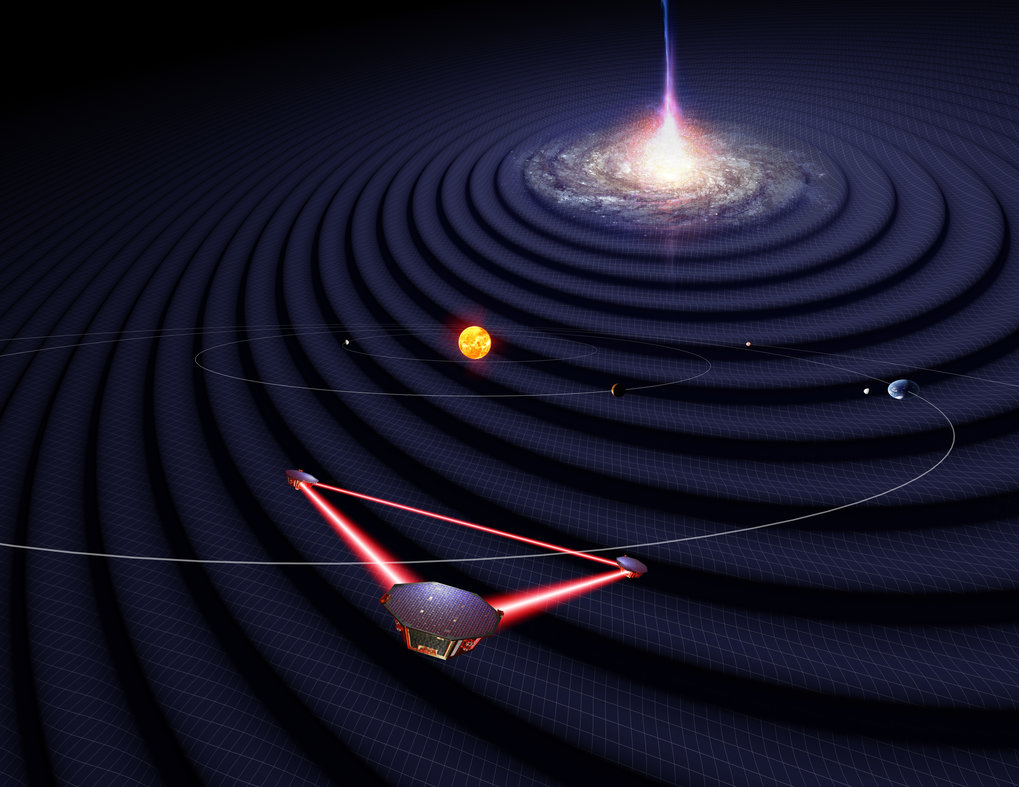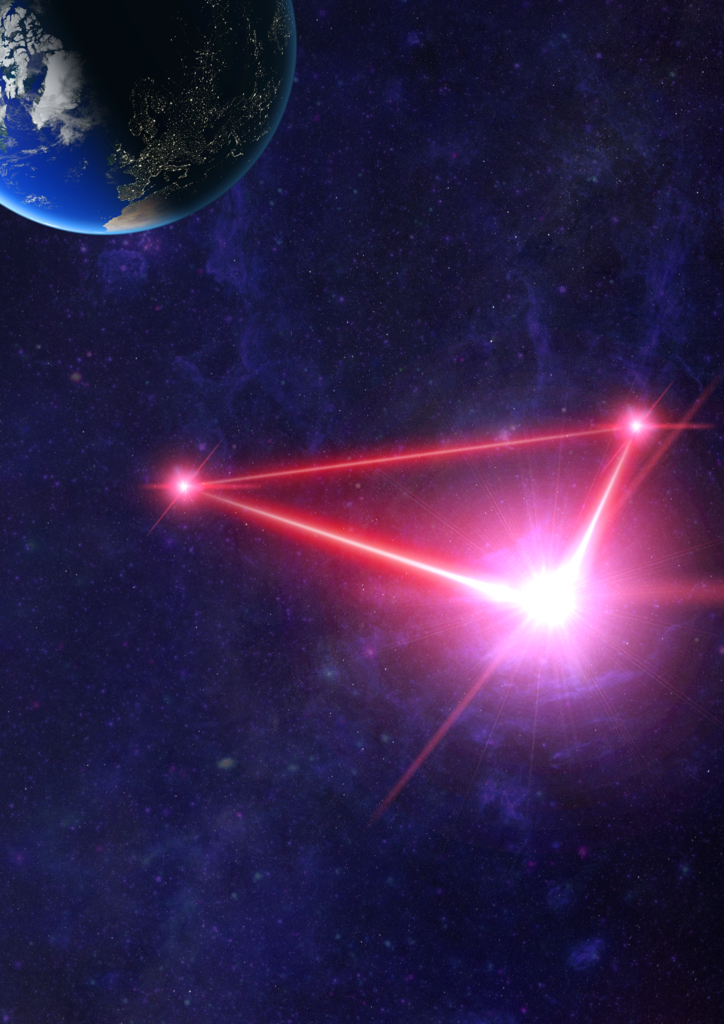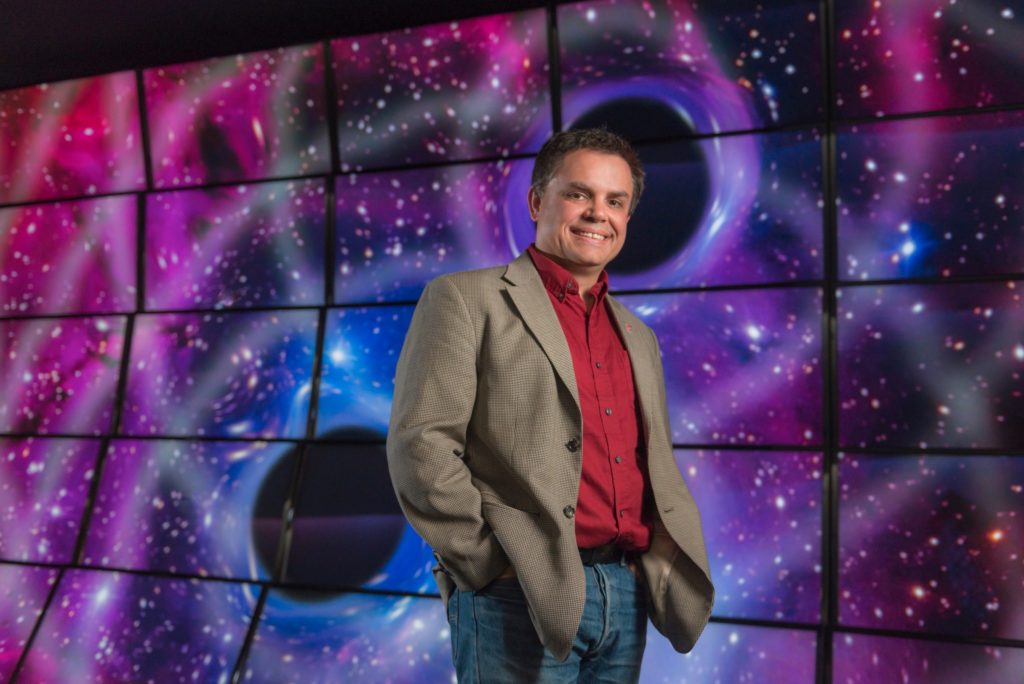
- This event has passed.
This is a free and open to the public hybrid event, held both inperson and online. Due to the newly effective insurance requirements, we regret that we can not allow people under 18 on the Chapman Campus, they are welcome to attend online.
Join Zoom
This meeting’s speaker will present inperson on the campus of Chapman University.
THE SHAKING COSMOS:
Observing the Universe in
Gravitational Waves with LISA

Virtually everything we know about the Universe has been discovered from the study of photons — light in all its myriad forms from radio waves, to visible light, to x-rays and beyond. At the dawn of the 21st century, advanced technology is providing access to the Cosmos through detection of sub-atomic particles like cosmic rays and neutrinos, and through detection of ripples in the fabric of spacetime itself.
These ripples in spacetime, called gravitational waves, carry information not in the form of light or particles, but in the form of gravity itself. Gravitational waves are messengers which carry the stories of what happens when two black holes collide at the centers of galaxies, of how the compact stars fall into monstrous black holes, and of how the graveyard of the galaxy is filled with the quiet whisper of binary white dwarf stars that spiral together ever so slowly as they fade into oblivion.

This talk will explore the modern description of gravity, what gravitational waves are and how we hope to measure them, and what we hope to learn from their detection. We’ll focus on the forthcoming space gravitational wave observatory, LISA, being launched in the early 2030s by ESA and NASA. Gravity has a story to tell, and in this talk, we’ll explore some of discoveries we hope to make by listening.

Shane Larson is a research professor of physics at Northwestern University, where he is the Associate Director of CIERA (Center for Interdisciplinary Exploration and Research in Astrophysics). He works in the field of gravitational wave astrophysics, specializing in studies of compact stars, binaries, and the galaxy. He works in gravitational wave astronomy with both the ground-based LIGO project, and future space-based observatory LISA. He was formerly a tenured associate professor of physics at Utah State University. He is an award winning teacher, and a Fellow of the American Physical Society. He contributes regularly to a public science blog at writescience.wordpress.com, and tweets with the handle @sciencejedi
Views: 1
